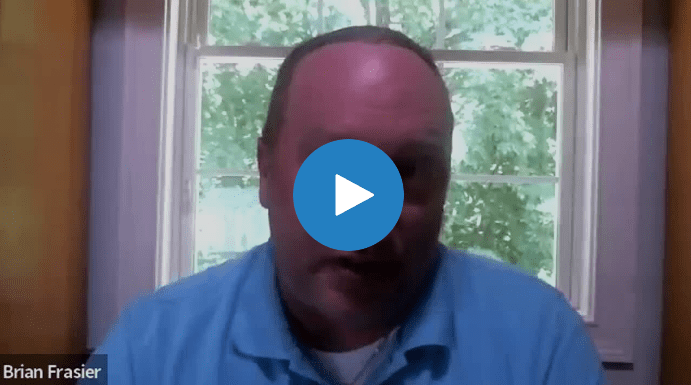Masterclass – Managing Conflicts of Interest


Putting your team at risk is as easy as opening a present. Conflicts of interest are some of the most slippery risks to your organization. How do you track what could be potentially thousands of risks that could be as innocuous as a holiday gift card, a compensated meal, or an unfair hire? All businesses and employees have conflicts of interest that should be disclosed, or often must be disclosed to maintain regulatory compliance. This master class will consider how to manage COI at scale, when you might have thousands of conflicts to track, investigate, resolve, and document.
Transcript for Masterclass – Managing Conflicts of Interest
Matt Kelly: Hello to everybody who is joining our masterclass today. I see dozens and dozens of participants coming in. So, we’re going to do a slow rolling introduction for a bit while everybody comes into the meeting room. I am your host for the hour, Matt Kelly. Thank you very much for joining us all. And we are here today to talk about conflicts of interest. We have some great speakers, and I always enjoy all of the commentary from the attendees as well. But before we get very far, I wanted to turn it over to Nick Gallo, co-CEO of ComplianceLine and sponsor of these webinars. Nick, I know that you had wanted to talk about how we are going to rebrand this I think as the EthicsVerse or something. So, I’ll let you do a quick rundown on what are you guys up to now with all of these online discussions.
Nick Gallo: Yeah, thanks for that, Matt. Hello, everybody. Thanks for joining us today on the first official episode of the EthicsVerse. We have gotten so much feedback about these masterclasses and these coffee talks and this programming that we’re doing. So, we’ve decided to bundle it together. And each week at this time, we’re gonna have some programming like this. It’s gonna have professionals from the industry. It’s gonna have Matt Kelly hosting masterclasses. It’s gonna be topics that are top-of-mind. So, you can tune in, have lunch during this, or have your first coffee of the day if you’re on the West Coast and get some information that’s gonna make your job better, that’s gonna make you more effective in your job and make you, you know, be more effective in making your workplace better.
So, we’re super excited to launch this today. Not much will change other than the fact that we’re gonna just have more content to push out and more stuff for you to tune into.
So, today, as always, I got to tell you, this is our first episode. We did not plan to look this good together. Look at this color coordination across everyone’s outfits. So, this is just natural. So, this is off to a great start. As always, before I pass it back to Matt, everybody tune in and/or everybody drop into the chat and say where you’re from. We always want these conversations to be exactly that. We want them to be conversations. We want them to be valuable for you, and we wanna take advantage of this really special thing that we’re all a part of. The ethics and compliance community is something that’s unique. I’m gonna keep saying it until I’m blue in the face.
We have so much power in utilizing each other and building our networks. So, drop, you know, your LinkedIn link in the chat, ask your questions, share your tactics, share what you’re struggling with, and let’s sharpen each other and build together.
As always, the world-famous EthicsVerse book giveaway will be in full effect today. We’re gonna have some really interesting new books that we’re gonna be adding to the page, and those will, as usual, be given to the people that have the best contributions, that ask the best questions, and so forth. So, without further ado, let’s pass it back to Matt, and we’ll dive into this awesome topic for today.
Matt: All right. Well, thank you very much. So, as I mentioned earlier, today, we’re going to talk about conflict interest programs and how compliance officers can build those up into an effective program that really helps you with your overall corporate compliance effort. We have two speakers with us in addition to me and Nick. First, we have Melanie Sponholz. She is the Chief Compliance Officer for Waud Capital Partners, which is a holding company for several healthcare company businesses I think. Melanie, welcome. Thank you for being here.
Melanie Sponholz: Well, thank you for having me. I’m excited. I’m loving seeing where all these folks are from in the chat. This is awesome.
Matt: And also, we have Brian Frasier. He is Director of Compliance Audit at RPM International, which is a maker of coatings and sealants and other building materials and whatnot. So, Brian, thank you for being here as well.
Brian Frasier: Thanks, Matt. I really love this topic, so I look forward to getting through and talking to everybody on the call.
Matt: All right. So, for everybody listening, here was our basic plan of attack for the next hour or so. First, we wanted to talk a bit about how you encourage disclosure of conflicts in, I guess I’ll call it the small grain granular level because a lot of employees might have conflicts, they immediately think they’ve done something wrong. “I might suffer. I’m gonna stay quiet.” You know, how do you encourage them to be partners and basically create sort of a safe zone for them to speak up and disclose conflicts? Then also, how do you deal with conflicts at the larger scale when you’ve got 2,000 of them from all the employees who have now come forth with their conflicts and you have to figure out at a holistic level, how do we investigate them? How do we decide what the proper resolution might be?
Also, talk a bit about how you would, say, track all of your COI activity. We always like to talk about data analytics. Everybody likes to talk about data analytics. It could do a lot for you, but how would you actually get that done at an enterprise level? And how do you extract, I guess, insights from all of the COIs that you have and you’re analyzing holistically? And you can say, “All right, maybe we have a personnel problem here. Maybe we have a policy issue over there that needs attention. Maybe we have some need for, I don’t know, improvements to other parts of the compliance program, things like that. But, you know, how do you, as a compliance officer, extract value from all of the COI management that you’re doing? So, those are big, broad areas that we want to get at.
As always, as Nick had alluded to, we always welcome questions or comments from users. We already have, I don’t know, more than 100 comments in the chat already. So, certainly, if you have observations that you wanna make, chime in. If you have questions you want to ask or call out and challenge something that somebody says by all means, please do. The more interactive we can be about these subjects and these sessions, the more productive they all are. So, we’re all for that.
So, my first question to kick things off that I wanted to ask, I guess, maybe first, Melanie, and then Brian is, you know, what do you see as the most difficult issue in managing conflicts of interest? Because we have a lot that we could pick from. Maybe is it getting employees to speak up? Is it getting to manage all of these cases at a holistic level? Is it something else? But…see the most challenge? And like I said, Melanie first, and then Brian. What do you think? And, Nick, then I’ll circle back to you.
Nick: Perfect.
Melanie: All right. Thanks, Matt. And I think something you mentioned when you were going through the topic resonated with me, which is people being afraid to speak up about a potential conflict or maybe they are pretty sure they have a conflict and they are afraid they’re gonna get in trouble if they talk about the conflict. And I think kind of managing the shame game around conflict of interest is one of the biggest hurdles but it’s one that if you kind of start from that I think can get you further more quickly with your conflict of interest management program. So, you know, I like to do a lot of education surrounding this and talking about how, you know, conflict doesn’t equal wrongdoing. So, I think you have to divorce those two things. So, you could have a conflict. The intent could be just fine. It could be a conflict that can be managed, you know. We just need to be aware of it so that we avoid it turning into a problem. So, I think sometimes the hardest thing for companies is to start out on the right foot by really making that distinction and getting rid of the shame game so that people are willing and understand why they need to talk about the conflicts.
Matt: Yeah. Brian, what do you think either in reaction to what Melanie was raising or some other issues that weigh on your mind about COI programs?
Brian: Yeah, I mean, I think the perception for most employees is you’re already starting out in a negative situation with how they perceive even the word or the policy of conflicts of interest, right? The word conflict itself already puts people kind of on their back feet. And so part of…and, you know, training is a huge part of this to break through that perception. But part of the language that I use is really about describing how common it is to have some level of potential connection or family relationship or list through the number of different examples of conflicts of interest and bring it down into a personal level that kind of removes that fear and that hesitation for them to bring up their specific example because they start learning and hearing these things that aren’t necessarily bad, and that helps kind of reduce that fear, I think, about discussing their own particular situation and bring that up.
Matt: And, Nick, give us your thoughts here. And it’s funny, actually. I already see people in the chat. Somebody said, “Describe at your own organization the comfort level people have in disclosing conflicts on a scale of 1 to 10.” I’ve seen a lot of 2s. I’ve seen a lot of 3s. And actually, I love Brian’s point that the very word conflict makes it seem like you did something wrong when some conflicts might not even be your fault, you know. It wasn’t your fault that the company bought my in-law’s subsidiary, but now I have one. And so there’s a lot of, I don’t know, I guess stigma that might be the first stumbling block with COIs. But, Nick, what do you think?
Nick: Well, I think what you said is exactly spot-on and it’s exactly right. The existence of a conflict isn’t necessarily a bad thing. It’s a natural thing. You might have, and especially in today’s economy where, you know, millennials are, you know, part of the gig economy, like, there’s tons of people in my organization who have a business on the outside. They make jewelry, they do photography, they make music, all those kinds of things. Those things are all technically conflicts of interest that should be disclosed. I don’t think, to your point, that it’s that uncommon, but I think there’s this sort of binary perception that it’s a black or white issue, and if I have one that I need to hide it. And I think it all kind of comes down to Brian’s point and, frankly, to what Mel said. It all comes down to education.
If we’re ever gonna get to the point where we’re truly crowdsourcing risk management or managing risk at scale, we have to involve these human sensors in our organization, and they can only be sort of turned on and activated if they understand sort of the gray that we’re all kind of swimming in and wrestling with and whatever. So, I think those clear policies are critical, but also showing, you know, the different sort of flavors of conflicts and that probably, in most cases, assuming most people are good people, the conflicts that exist are probably not bad, but they should be disclosed for the perception of conflict and so forth.
Melanie: Yeah. Nick, just to add on to that, I think with the education, it’s helpful to show some examples, real-life examples that people will understand. So, you can say, “Here’s an example of a conflict. No one did anything wrong here, just inherently a conflict, and here’s what we did. And look, no one got the pillar read in the public square or something like that, you know. We just came up with a good rational solution to put some guardrails in to mitigate the risk posed by that conflict so that people can see that it’s not that big a deal.”
Nick: Yeah. And I think you can even kind of leverage that even further if you make a little video. I mean, it’s so easy to make little videos now. Make a little video of different sort of managers of different groups throughout the organization who have had similar kind of conflicts and have it come straight from them. You know, that kind of helps to humanize the issue and shows that, “Oh, wow, I’ve seen this person 100 times in the hallways, or I’ve seen them on 100 different Zoom calls, and they didn’t get their head chopped off for having…”
Melanie: I like that.
Nick: “…a jewelry business,” or something. You know what I’m saying? That’s a very easy hack to really raise people’s awareness of, like I said, this gray. We’re really most concerned about these tail events, right? These really sort of bad actors and stuff like that, but we need to kind of know of them all so that we can sort through those appropriately.
Matt: You know, it’s funny that the second question I had drafted here to ask you all was, why haven’t we solved conflicts of interest? And the more I’m listening to you and reading the people in the chat here who are feeding back, it almost seems like COIs shall always be with us. And this is not a problem to be solved as much as a condition and fact of life to be managed or accommodated and, you know, kind of just convincing people that this is fine, this is the way it is. I don’t know if maybe you have any thoughts about that. But I’ll go in the same order, like, Melanie and Brian and then Nick. This is never gonna go away, but that doesn’t necessarily mean that you’ve failed. These things happen. This is part of life.
Melanie: Yeah. So, I work primarily in healthcare. So my examples are gonna be in that world. But, you know, I think sometimes the fact that you have conflicts is the result of having a really good team because you have a team of people who are experts, who are sought after, who are active in their fields, doing a lot of things, and doing a lot of things is going to generate some conflict. So, you know, I like to kind of keep it in a positive light in that respect. So, you’re right. I don’t think the conflicts will ever be eliminated because if you’re, you know, dealing with certain populations of people and employees, they’re gonna be doing a lot of things in their field, and some…you know, it’s a small healthcare world, so, you know, you’re likely to create some potential conflict.
So, you know, for instance, you have a great, well-respected physician practice while, you know, some of those top physicians are probably the ones who are out speaking about things or developing new products in their field of medicine or consulting for pharma companies or device companies because the pharma and device companies wanna know what they think about things because they’re the ones on the cutting-edge of using the products, right? So, I think you’re inherently going to have those conflicts pop up.
So, it is just a question of making it part of your culture that everyone understands that they do exist and that it’s okay that conflicts exist and that you’re just putting these guardrails in place to protect the organization and the individuals, and in healthcare, the patients. And I love to keep their interests at heart, too, because I think it resonates more with the providers when you help them see it from that angle.
Nick: I love this hack from Tammy. She said we use the word potential when educating. Every scenario can be different, and usually is, and all scenarios are not conflicts of interest but there is always a potential. And again, just being able to talk about it and it not being a bad word is what can open the door for our awareness to, you know, rise up.
Brian: There’s so many nuances. Everybody’s got their own particular story and the nuances that come with that. One, you know, the collection…they’re never gonna go away. I mean, conflicts of interest is just gonna be part of business, like anything else in employee relations. They will never cease. So, we’re always gonna have to manage them and review them. The part that I think gets potentially missed is if you go through and you evaluate a potential conflict of interest and you put good fencing and good guardrails around whatever the nuances in that particular situation is that the employee maybe walk away from that, “Okay, I reported it.”
But what if the circumstances change in the future that those fencings that we put around, those guidance that we provided, those circumstances change for that employee and they don’t feel the need to have to come back and provide that context to whatever that relationship was or whatever the nuances were because that’s already been addressed? Well, things in life change, and those relationships can change, or whatever that thing is. And so it’s educating them as things mature or things change is to continue to have that discussion. And it’s not a one-time we disclosed it and move on.
There’s a responsibility there that needs to be considered should those circumstances change that might move that potential conflict of interest into a more new area that needs to be evaluated again.
Matt: Could I ask a little about…I guess the outreach campaigns that you each might run at your own companies there about how to explain to employees what you’re doing, whether you actually do use a clever phrase other than conflicts of interest? But, like, what’s the marketing campaign around this, if any? Melanie, what do you do? And then, Brian, what do you do?
Melanie: Well, some of what we try to do is hit it from multiple angles so that…you know, what you don’t want is the really dry five-page policy that gets attached to an email. You know, if that’s what you’re doing, that’s not gonna be effective. So, you know, we try to do things from, you know, let’s bring it up at the meeting with the clinical governance board in live and in-person. I really a big fan when you’re first getting started with it of doing some live trainings on it because then you can have Q&A. And I think that ability to have question and answer right then and there is super valuable when you’re rolling it out. So, maybe we do one meeting at the Clinical Governance Board, we do another meeting with our procurement office. We could do another meeting with the research department.
So, you want to also capture because those different populations also probably have a different flavor of risk that is most likely for them. So, it’s helpful to break it down in that way and have some separate conversations so you’re more likely to get dialogue about things that will be meaningful to the group in the room. And then, you know, I like the idea of… I love the video idea, Nick, of having real-life examples with people that are known because one of the other things that we would do is send out some microbursts. And this applies, Brian, what you were saying, too, because things change. So, we would send out reminders, little microbursts throughout the year saying, “Hey, I know you did your disclosure six months ago, but just a reminder that, you know, sometimes you need to update things.” So, I think it’s attacking from multiple angles and getting specific with who your audience is, and offering that Q&A ability have been the most successful, in my experience.
Matt: Sure. Brian, what do you do?
Brian: So, our program in the maturity range is quite low. We just actually introduced a formal conflicts of interest policy about a year and a half ago. And our nature of our company is somewhat unique. We’re very decentralized. So, we have multiple subsidiaries throughout the world. And so the communication and reach is challenging in that aspect from a training platform, language and, you know, all kinds of those challenges in working in a global environment. So, we’re in the beginning stages, I would say, of our maturity of our whole program. We have a policy, we have a training, we have a disclosure, annual disclosure process. And so really, that’s the basic foundations that we are building upon. And then, you know, where we go from there and once we get more solid ground on the effectiveness of where we’re at now, I think we’ll be looking at the other things that can complement our conflicts of interest program as things continue to mature.
Matt: Sure. And, Nick, do you have any other thoughts here about, I guess, the charm campaign that companies need to wage to win over skeptical employees?
Nick: Well, you know, I always love a good mascot. So, you could have a koi fish as your user C, but I don’t know, you have to, like, humanize the thing, and you have to, I think, in general, give the why behind the what, you know. Why do we care about conflicts of interest? Is there a regulatory thing? Is it just a general best practice? Do we just wanna…? Is this an underpinning and a pillar of, you know, just having an ethical workplace that’s built on integrity if that’s one of our values or that’s one of our implied values? I just think, you know, again, you know, I’m always talking about crowdsourcing risk management, but people have to be actualized to do that and they have to feel like they’re part of it. So, I think, you know, if you’re starting from nothing, you have a lot of opportunity to start to sort of crowdsource some ideas on, you know, “Hey, this is what we’re trying to do. How would you go about doing it? What kinds of things would you think of?”
And I always just find as people are involved in the creation of a process, their buy into it is better, and you have a lot more of these ambassadors, sort of these conflicts of interest or ethical ambassadors throughout your organization. That’s something that I think in this next phase of ethics and compliance, we have to be taken advantage of if we’re gonna truly kind of elevate and create that sort of stepwise function or that stepwise improvement of the level of ethics in our organization. I will expect a credit, though, if people start doing the koi fish thing because that’s pretty good. Okay.
Matt: I was about to say for all…at the koi fish. Like, note the time and place because a year from now, that’s gonna be all over. You know, so one other question that I had wanted to ask, and actually, Brian, since you’re at a very decentralized organization, I’d be curious for you, in particular, the risk of an employee disclosing something to their manager and the manager doesn’t necessarily know, “This is COI, I should pass up the chain,” and I guess resolving COIs onto themselves without involving compliance. How do you either make sure that doesn’t happen? Or do you have a policy for managers so that they can recognize, “I’m being told a conflict, I have a process I should follow”? How do you defuse that? And then, Melanie, how are you aware of that, and how do you approach that kind of a threat?
Brian: So, I think the amount of conflicts of interest or potential conflicts of interest that are out there with our company is so much greater than what we are currently aware of. And because we’re in the early stages of educating and our kind of unique structure of our company being decentralized, that is a huge challenge for us. And I have no doubt that management at the local level are probably aware of things. Either they don’t recognize it as a concern to elevate it up to the legal and compliance department or to the higher level HR, and they keep it local because they’re used to keeping everything local because they’ve been decentralized company, right? And it’s a culture thing for us that we are moving towards teach and train and provide that understanding of responsibility in these types of risk areas, that the communication, that partnership has to be elevated up to the parent company.
And so that’s a continued work in process for us, but it all comes down to education. When I go out, I’m starting to travel now internationally. I’ve been in Latin America. I’ll be going back to Latin America next month. And I have, you know, the opportunity to sit down with leadership in a way that they haven’t had, obviously, in the last two and a half years and be able to have these discussions with them and make that connection on conflicts of interest. I don’t think there’s been one compliance audit that I’ve done in the last year where I have not identified some type of potential conflict of interest that I’ve been able to hold those discussions on a one-on-one level when I’m visiting the business, which has been extremely valuable for a lot of different reasons. But it’s been a piece at a time to kind of make those connections as I try to start to travel and get out there and meet with people at the different scenarios.
Matt: Sure. Melanie, what do you think about that risk that management might act alone and you need to give them some special education and handholding?
Melanie: Well, I think one of the things you can do, I mean, it goes kind of back to my earlier comments on your individualized rollout of your program is, you know, how are you educating your managers? And then, you know, in the day of the great reshuffle or great resignation, whatever you wanna call it, you know, are you incorporating this in your onboarding so that as you do have new faces, you know, are you making sure that you’re capturing conflict of interest in the onboarding, not just of the people who are most likely to have the conflict, but also the people who are management in those areas or HR who might be most likely to maybe come in contact with a potential conflict and need to know what the triggers are to ask someone to submit reporting or to contact the compliance office?
And I do think that the whole program, you should, you know, take a 30,000-foot view and map out all of your contact points that you have that would be good places to educate. So, is it onboarding? Is it making sure that your disclosure or questionnaire is really specific to your organization so that it resonates with people because it’s really talking about the kinds of conflicts that would occur in your business? Sometimes people get kind of an off-the-shelf program and roll it out, and the questionnaire may have a bunch of N/As on it, which, you know, makes people feel more like this is not something that applies to me. So, you wanna really customize your questionnaire. Maybe that’s another big touchpoint so that you’re educating even through your questionnaire because it’s helping people see, “Oh, these are all the kinds of things that, you know, I need to be thinking about.” And maybe even doing a specific training with management on the questionnaire itself and how you developed it and why because a lot of people really have that super general…
You know, a conflict of interest is this financial interest. You know, somebody has ownership and something else or…you know, people don’t think about things, I don’t know, like knowledge, insider knowledge, you know. Is someone doing something that might put them in a position where they could inadvertently or intentionally share proprietary information from your organization? That could be a conflict, or time could be a conflict. Is this something that someone is doing that they’re doing on company time that is not for us, it’s for something else? So, kind of broadening people’s understanding of what a conflict looks like so they’re more likely to bring it to you and just finding all of the touchpoints in your employees’ life cycle that you can get a plugin for these things so that they’re more likely to think about it.
Nick: I mean, there’s a couple of different dimensions, right? There’s all these different types, and then there’s an actual one, there’s a potential one, and then there’s also the appearance of one. I mean, so this is not a very simple thing. It’s not a binary black and white thing, and I think that that variation is such an opportunity, to your point, about educating leaders. We wanna be able to attack this thing on both fronts. We wanna have it from a top-down and a bottom-up perspective.
So, a top-down is maybe call that your, like, annual review process or your quarterly review process, and those should be sort of, to your point, thoughtful. It shouldn’t be sort of a stock conflict of interest form. And you may wanna have different conflict of interest, you know, questionnaires for different types of people, you know, depending on their job or their area of focus, but you also wanna open up those opportunities from a bottom-up perspective for someone to raise their hand and say, “Hey, I just started this new hobby and I’ve started to, you know, photograph weddings,” or whatever, right? Like, there’s 1,000 different things that if people know what’s important and are not, you know, motivated by fear or that fear sort of preventing them from actually speaking up, then you’re gonna get a much better picture of the true risk landscape that you’re traversing across.
Matt: Yeah. You know, I did wanna just ask I guess maybe a fairly elementary question of Melanie and Brian as well. So, do you have already pre-defined conflicts, I suppose? I mean, we talk so often about COIs, but we haven’t actually clarified what the COI is. Like, you mentioned financial interests, that seems pretty clear-cut, but you could easily have conflicts in hiring decisions, promotion decisions, things like that. And how clear do you want to be with employees that these are the sorts of things we’re looking for, and so please be aware of them? Do you also include maybe, “And any other thing that you think might be a conflict, bring it to us, we’ll decide it”? Like, how do you scope out what a COI is…
Nick: Good question.
Matt: …that you wanna be thinking about? And I’ll start with Melanie and then Brian.
Melanie: Yeah. And I think it’s important on two fronts. I mean, one, because you do want people, of course, to understand what they need to report, right? But also, it’s important to have that definition because you have to decide who this all applies to, right? I mean, I’ve worked in companies where maybe every employee gets some general conflict of interest survey upon hire or something, but then sometimes we’ll focus in who’s doing the full annual disclosure. And maybe, you know, you think about who does that include? Is it those who manage or supervise or hire, people who have procurement power that, you know, are able to direct dollars from the organization? Is it people involved in research and healthcare? So, you need to know what your definition of conflicts are so you can also think about who’s the population that really needs to be captured in your program. So, I think that’s important.
We do try. I mean, I feel like…and I’ll be curious to hear Nick and Brian if you have interesting solutions for this because I do think you have to straddle giving a bunch of examples of what a conflict is without making people feel like that’s it then, you know. So, here’s the list, and if it’s not on the list, I’m good. So, you know, how do you be clear but also be clear that you can’t possibly think of everyone? I think that’s always a challenge.
Brian: Yeah, a huge challenge I think. You know, my view is try to strike a balance between the risk and knowing that you can’t account for every example out there, but be broad enough to allow for everybody’s individual situation to be reported in, to be at least evaluated from some type of, you know, maybe easy, quick way at some level to say, “Okay, thanks for reporting that. That’s not a concern,” or, you know, “We will document this and move on,” rather than elevating it up to a more serious type of evaluation. So, I’m trying to strike that balance of capturing as much information and then be able to prioritize from that is a constant battle, I think. And if you define things too narrow, then you’re gonna have the employees on the other end say, “Well, obviously, my situation does not fall into that definition, therefore, I’m not gonna report,” when it could because their particular nuance or their particular circumstances are of such that, certainly, could be a potential conflict of interest that would need to be evaluated.
So, it’s a difficult situation. I certainly don’t have the answers to that, but my approach or my philosophy is to try to be as broad as possible and allow the process to take care of itself through the right reporting channels and the right people in the right places to conduct that evaluation to try to provide the best guidance where it needs it the most.
Nick: Yeah. I think a principle-based approach where we can sort of sum up what’s the essence of a conflict of interest, something that could lead to impartiality that could make you, you know, pursue what’s best for you over what’s best for the organization. I mean, that’s just sort of a guiding principle about, you know…that kind of governs all of our work relative to the jobs that we have, and then sort of fractalizing that out into a bunch of different examples, some that are above or below the materiality threshold so people can start to get a sense in the context of their own job of what kind of inbounds, what kind of outbounds. I think that’s an easy way to start. I think there’s a lot of good guidance out there of examples. But again, to Mel’s point, we don’t wanna just draw these lines and say, “This is everything,” because you’re never gonna be able to articulate every single possible conflict of interest.
You know, I mean, we haven’t even started talking about the work from home and the post-COVID world yet. That introduces a ton of conflicts of interest, right? I mean, the old guiding principles were like, “Well, when you’re on company time, you need to be doing company work.” Well, what about when you’re doing company time at home and you have kids in the house? I mean, is that a conflict? Is it not? How are we as an organization, or how is your unique organization gonna provide that? Because at some level, we have to fight against…like the base level of… There’s always a base level of self-interest, right?
Like, we’re all beings that are trying to, like, maintain our lives, not to get too Maslow or too dramatic about it. But, you know, we need to make sure that people feel safe raising their hand about something that might be a potential one in this new kind of environment that maybe all the literature and all the guidance hasn’t really caught up to yet.
Matt: You know, I was jotting down some notes here, and one thing that occurs to me is really probably two realms or two ways to approach this. Certainly, you can define some of your big conflicts of interest depending on, well, what are our key compliance risks or business risks? But, you know, that depends on you have a good compliance risk assessment process and you’ve defined all of that, then you can reverse engineer your conflicts. But I always keep coming back to the conflicts that you have not anticipated. When your company steps on those landmines, in particular, that’s the one where the board is going to be staring at people saying, “Why did we not think of this?” And they will be staring at you, compliance officer. And so that part really depends on, frankly, your ethical culture and your ethical values, but the speak up culture because employees speaking up to say, “I think this thing over here might be weird” is the single most important control in all of compliance.
Nick: A hundred percent.
Matt: Yes. And that’s the sort of way that you’ll need to be able to I guess get to both sides of this issue. I did want to shift gears a little bit to more of managing the program at scale. So, let’s say you do have a great work culture and all the employees have come forth with their conflicts, and now you have 2000 that you need to sort out. So, what would your approach be to triage them, to classify them, to try and, I guess, resolve each one? We have a lot of people here who are asking, “Who actually does the review? Is it you? Is it legal? Is it somebody else? Is it a team?” Melanie, why don’t I start with you about how do you try and manage this at scale? And then, Brian, what do you think? And then Nick.
Melanie: So, yeah, I’ve approached it a few different ways. I work with usually at any given time seven or eight healthcare companies. So, I think some of it really has to do with the size of the company. So, it’s a lot easier to kind of home-grow a system and review everything personally if you have 200 employees, right? If you have 4,000 employees, it’s getting a little hairy, right? So, I think when you hit a certain critical mass, you need to start looking at technology to help you out there. You know, there are systems that, you know, you can set up your questionnaire so that if someone gets through the questionnaire without hitting a trigger, then it can be automatically approved for you so that you’re not having to read 4,000, you’re having to read the, you know, hopefully, more reasonable number that actually have a potential conflict of interest.
And so I think that’s one key thing. And actually, you know, Nick and I have been talking a lot about return on investment. You know, I think you can make the argument for getting some technology in your budget to help with this, when you can show the amount of hours for your team that it’s gonna take if you’re doing all this manually. So, I think that’s something to think about.
And then, yeah, I’ve also seen different companies choose to have different ways of reviewing. A lot of my companies it is the compliance team that starts the review. And then there’s, you know, a process where usually some combination of legal and compliance will look at any that, you know, are not clear-cut, easy to resolve. They get kicked up the chain for a larger review in those instances.
Matt: Brian, how does it work at RPM?
Brian: So, again, because we’re decentralized…yeah, this really becomes an HR level thing to manage at each individual company. That’s for, I would say, the vast majority of normal perceived or potential or actual conflicts of interest. Things that might be more risky that involve some type of level of management or potential legal concern certainly gets elevated up to Legal and Compliance Department at RPM for us to be able to triage appropriately and provide guidance back. Again, we’re in infant stages here. We have 15,000 employees spread throughout the globe. So, we have to approach this from a risk-based perspective and try to attack it from that standpoint.
A good portion of those 15,000 employees are at the plant level where they have no computer. They don’t even have an email address. So, we are already behind the eight ball at that level, but that level is not really where our risks or high risks reside in, really. They’re at the management level, they’re at the office level, the accounting level, the finance level, you know, the management teams. That’s where our risks lie where we have to emphasize our training and awareness because we can’t necessarily reach every employee in the organization the way we would like to. So, we have to triage and provide some type of risk assessment at that and allow the businesses to handle it at some level on a regular ongoing basis, and then be a partner when those examples elevate because of risk, where we step in and be able to provide that guidance from a legal and compliance perspective.
Matt: And, Nick, tell me what you think here, and especially about how conflict of interest policies or programs, like, they really have to tie to good case management, good implications. You know, you can’t really have COI without those things already being well developed, especially if you’re gonna manage them all at scale. But what are your thoughts here?
Nick: So, I’ll tell you how we’ve developed our tools to kind of attack some of these things that have come up. And I think any tool should be able to do something like this. So, it should be flexible enough that anyone can fill out the form, whether they have a computer or not, whether they have an email address or not. They should be able to fill that out on their phone, and we should be able to leverage, so they should be easy to fill out. We should also be able to capture good metadata around these folks so that when it get it…and I’ll get to this in a second. We should be able to capture good metadata so that we can identify these people because, again, to your point, maybe some folks don’t have email addresses, or sometimes you want to extend this out to your vendors because these conflicts of interest, depending on your business setup, can go a bunch of different directions.
It also shouldn’t be a separate sort of, like, system from everything else, to your point. Like, you have to investigate these things. And so a good case management system should allow for centralized or decentralized investigation of any kind of issue, whether it’s a sexual harassment issue or it’s a conflict of interest issue. Part of that is also being able to, like, automatically or algorithmically using an algorithm to triage issues.
So, our job many times in ethics and compliance is to find these needles in the haystack. Obviously, that’s a pain if you have to pull each, you know, piece of straw out of the haystack. We wanna be able to use that magnet to pull out those pieces of metal to see which ones are actual needles and which ones are, you know, paperclips or something. So, a good case management system that can allow for you to customize flexibly the types of issues that you wanna rise to the surface, and then also be able to report on those.
That should be able to be tied out to something else like an HR register that shows you all your different people. What are my levels of participation in this? Because that’s gonna give you some kind of an indication early on and actually throughout the program of how many are just, you know, part of my annual, you know, conflict of interest program? How many of those are sort of self-reportings? And if you can do this right and you can really start to actualize people, you should have not only a pretty good balance, you should have multiple instances from people who feel safe enough to speak up. And you can also open this thing up for, you know, people to raise potential conflicts of interest that might not even be related to themselves, right? You wanna know about them regardless, right?
So, this is like speaking up on behalf of somebody else. You can talk about a conflict of interest that, “Hey, I just wanna make sure everybody knows about this as well.” So, there’s a lot of real opportunity in conflicts of interest that I think many of us, you know, again, on a basic level, like we said in the beginning of this conversation, a lot of people kind of look at this on a black and white basis. But with a couple of little tweaks to programs that we already have in place or tools that we already have in place and putting a little bit of our heart and mind into how these programs are rolled out, we can start to get that logarithmic increase in crowdsourcing risk management, which I think is what our big goal is.
Melaine: And Nick, just thinking about case management as it factors in when I talk about automation, I think that’s key because there could be a lot of back and forth and documentation involved with evaluating and then potentially resolving a conflict and to be able to have it all in one program.
Nick: One spot.
Melanie: One thread.
Nick: Totally.
Melanie: Yeah. So much better because if you have, you know, emails here and emails there and a spreadsheet here and a questionnaire there, you know, it becomes really chaotic. So, I think that is a big plus to have a key management approach.
Nick: Yeah. And if it has, like, an automatic triage based on category or on severity or whatever, based on however, you know, like Brian was saying in this super decentralized thing, well, if there’s a red flag conflict of interest, well, that should automatically just go to the HR person that’s also gonna be in that system investigating, you know, the sexual harassment claim or whatever else. You know what I’m saying? Having it in one spot is super helpful, and also not having to sort through a bunch of, like, garbage to actually get to the thing that matters. I mean, everybody has a massive to-do list. You know what I’m saying? Everybody has 1,000 things to do, and you don’t want people to pay it short shrift, which means that you wanna compress down to the issues that actually are gonna potentially require their attention.
Matt: You know, Brian, I did want to circle back to something you had mentioned earlier. I was curious about how one would audit conflicts of interest, either the program itself, or being able to identify some individual conflicts, but you said that, generally, when you go look, you can find something. Either, what do you do or what would you recommend sort of a best practice level to be able to audit the conflict of interest? You know, what’s your perspective on that?
Brian: Yeah. So, since we did launch out our conflicts of interest policy, we had our disclosure, annual disclosure process about a year ago. We’re about to launch it out again for this year. And so once we capture that data and I go into the places I go, I then conduct some data analysis, and it’s real basic stuff that I’m doing. But the one thing that has worked for me that ties into multiple compliance concerns is really matching the vendor list to our employee database. And by doing that, I’ve discovered connections or family connections almost every time. Then I match that up into our disclosure list to say, “Were these actually reported?” They were not.
So then you go through an educational perspective or approach to the business that I’m focusing on, and do they understand the policy? That’s another test for knowledge that I do with management team and various employees of the organization, is that do they even understand? Did they even take the training? Did they understand the disclosure process? And then I’ll get into the details of the particular potential conflict of interest that I identify.
And some have turned into quite serious conflicts of interest that had to be evaluated from a legal perspective, and some were just more routine family connections that were mundane. But again, they missed the opportunity to provide that on their annual disclosure, so there’s a training and awareness opportunity. And it’s not so much that they didn’t understand maybe the training. We have to look at the effectiveness of our training. Is our training actually working? Right? Do we need to go back to the drawing board if we’re having all these gaps and people not understanding the training we’re providing? Sometimes we got to take an inward approach and look at, “Well, are we doing it the right way?” If we haven’t…
Nick: And think of how much more difficult that is or the layer of complexity that comes in a global setting when you have different cultures and stuff like that.
Brian: That’s exactly right. So, that’s why we’re probably uniquely challenged in that area compared to some other companies that are certainly centralized or just U.S.-based, but those are absolutely things that I have struggled with or dealt with in the last year.
Matt: Melanie, I wanted to pose a similar question to you because more about how would you demonstrate the effectiveness of your COI program? Because you’re in healthcare, I imagine that there are a lot of healthcare regulators who want to make sure that your conflicts are well managed. You’re going to be able to need to show them something to show that we’re working and it’s working well. Like, what are your thoughts about either how to audit the COI program or how to document its effectiveness for regulators, auditors, anything like that? Like, what’s your approach on those kind of issues?
Melanie: Well, it’s interesting, you know. Sometimes it gets your point across when auditors are asking to see your conflicts of interest disclosures and, you know, especially for key personnel, whether it’s key physicians, or maybe it’s your board members, or maybe it’s your executive team, or whoever. But all of a sudden, the light bulb goes on that, “Oh, it’s not just Melanie who thinks this is important. You know, there’s actually other people that want us to do this.” So, that’s always helpful. You know, in healthcare, we have this open payment system, you know, so you can check your effectiveness with your physicians, at least, by seeing if what they’re disclosing seems to line up with what’s in the open payment system for them, which is helpful.
And as far as success goes, I mean, it’s interesting because I do find the caregiver population is sometimes challenging in this respect because they have a very strong inner sense of ethics and dedication to providing good care to their patient population. And they feel like as long as they’re doing that and as long as their intentions are pure that, you know, there’s no conflict. And so trying to help… I think, you know, Nick pointed out earlier that sometimes it’s the perception of a conflict. It’s not that there, you know, actually is one, but I think it’s effective. I know that it’s effective when I start to get the reports from the physician population of our companies because the light bulb has gone on that, “Oh, you know, I don’t think that I’m doing anything unethical, but I can see how my $50,000 consulting fee from this, you know, device company could look bad to, say, somebody I might prescribe that device for,” right?
So, I think you know you’re getting effective, one, when people start to see that it’s not just…and you can help them see this, of course, that there is a broader stakeholder group that’s looking at these potential conflict, and, two, when you start getting those reports, and they’re more accurate reports, and they’re more proactive reports as opposed to you having to, you know, chase down something that’s been reported to you in some other way. That’s when I feel like I feel the program is picking up steam and showing effectiveness.
Matt: We’ve got about seven or eight minutes left here. I wanted to ask a couple of questions that came in from listeners here, two that are, I guess, a bit more international and scope. So, I don’t know, Brian, if you want to take point, but, certainly, Melanie and Nick if you have other thoughts, I’d be eager to hear them. But somebody first is asking, “How do you balance the need for more information or investigating a conflict with privacy concerns that might differ from one country to the next?” So, I’ll put it to Brian first, and Melanie if you have any thoughts, and then Nick. But how would you answer that?
Brian: Yeah, so it’s a good question. It’s a difficult question because every country’s got their unique laws that could be a factor in that as far as what has been provided as information and how you go about looking into that, you know, without getting into specifics of examples like that. But you have to treat the understanding that the information that could be disclosed could be of sensitive or personal information that then takes a higher level approach and meaning in partnership. I would say, for me, with legal that, you know, these international potential conflicts of interest need a legal guidance to work through those potential landmines.
Privacy is a huge concern in Europe with GDPR and how that information is going to be looked at, accessed, transmitted, stored where it could, you know, have to do with people’s personal information that is of detail enough because you’re trying to show the exact circumstances of a conflict of interest. And to get there, you have to have some type of level of detail that speaks to that particular circumstance, which could be problematic from a privacy standpoint. So, we have lawyers in Europe and different parts of the world that help certainly provide privacy legal guidance and perspective should those particular issues come up, and that’s where I would certainly rely on, in particular, international concerns.
Matt: Melanie, do you have any experience with or thoughts about these kind of issues?
Melanie: You know, I don’t do a lot of work internationally, but it did raise, for me, just another concern to keep in mind, which is who has access to your conflict of interest information? So, even if you are, you know, in the states, you know, just making sure that as you design your process that you’re keeping personal information and maybe even potentially protected health information, you never know, but personally identifiable information, for sure. How are you protecting that? How are you controlling access? Are you making sure that you’re keeping the circle of people who need to review those disclosures as small as possible, and that they’re all well trained on the privacy issues around that? I think is important here as well.
Matt: There was another question. Where was it? Oh, yeah. Okay. So, here’s a tough one. So, Nick, I’ll put it to you first.
Nick: Great.
Melanie: Thanks.
Matt: When would you, or how would you start talking about COIs with the governing body? Which is something we don’t often talk about, but there might be conflicts within the board, or you might need to have those disclosed in an SEC filing, but there are a lot of leaders who would say, “Oh, of course, I know how to handle a conflict. This isn’t something that applies to me.” So, Nick, how would you recommend broaching subjects like that with senior people who might think this is not for people way up here on our plane of existence?
Nick: Well, I would probably step back from that question and tell you to ask someone else. No, I’m kidding. I’d step back from that question and think, “What is the goal of that conversation? Is it to make sure that my program is sort of fairly applied across the board? Is it to demonstrate my competence to these people that, you know, kind of control my job? Is it just to sort of authentically make sure that I’m looking under all the appropriate rocks?”
And I think once that’s kind of framed out your sort of persuasion path, because that’s what all this is, this is all human behavior, at least at some level, you have to maintain their attention as you have this conversation. Your persuasion path can kind of be dictated by that. I think on some level, you know, you could say something like, “Hey, you know, we know that you guys are steering the ship, but conflicts of interest can happen anywhere. And you’ve hired me to do this particular job. Part of what’s gonna allow me to sleep that night because I actually care about this is making sure that I’ve talked to everybody.”
And so having this conversation with you guys, you guys may have had this 1,000 times, they probably haven’t, you guys probably know everything I’m about to say. They probably haven’t, or they probably don’t. But that can open up for you to actually have that discussion. And I think it’s pretty easy to make the case that if for nothing else for us to create an ethical environment, our tone at the top, which is even the tippy top of the pyramid needs to be cohesive and coherent across the entire organization. So, they can do a lot by leading by example across the organization by engaging in this process, you know, in a sort of authentic way that then creates more fodder or arrows in the quiver to sell this across everybody else in the company.
Matt: Melanie, what do you think? And then Brian, too. Any other advice about the diplomacy of dealing with senior people on this?
Melanie: You know, I count myself pretty lucky. Haven’t had a lot of struggles with this particular one. I do think when you go back to my thought on having different touchpoints and how you publicize and educate on your program, that annual board education is another good place to touch on it. If you feel like it’s something that needs to be touched on there, you know, always good to find some enforcement and action or problems that have cropped up in really elsewhere.
Nick: Great point.
Melanie: If you can come up with some of those to share at your board meeting or your board education, that can be helpful.
Nick: Great point. Hey, Matt, you’re on mute, or Brian, sorry.
Matt: Brian’s on mute.
Brian: There we go. Sorry about that. So, my company is a family-run company. Historically, started by a family. We have family members at the leadership level. So we absolutely get it at a top-level board level, and we disclose those top-level family connections that we had within our parent company on our 10-K to the SEC. So those things… At least we have that, you know, understood at a high level, and that helps drive down that understanding throughout the organization because it’s a perception thing. And, you know, when we have a historically run family operation and you have concerns of nepotism, concerns of those types of high-level family connections that run some of our companies, even though that they were historically like that and they became part of our company maybe later, it’s that perception because that’s always existed within the employee population.
Of course, this is happening because so and so runs the company or is in that leadership position. So, you know, at a high level, we understand that perception because we have those family connections at the very highest level of our company. And I think that helps drive down the importance of the conflicts of interest as a general program and how those disclosures need to be thought about and handled as an ongoing basis.
Matt: All right. Well, we are pretty much at the end of our time here now. So, first, I’ll just say, Brian Frasier, from RPM International and, Melanie Sponholz, from Waud Capital Partners, thank you both very much. You gave us a lot to think about. Thank you to all of the participants who, as usual, made more good comments than I could even count. But, Nick, I don’t know if you have any other final thoughts or closing comments that you wanna make, and then we can…
Nick: You know, there were so many great questions in this. I love doing a panel where I feel like I learn a ton. As usual, our chat was totally popping off, so I invite you all to come back next week for the next installment of the EthicsVerse. And I’d love for you to put some ones in the chat if you want us to do more conflicts of interest stuff. There was probably a dozen or two dozen questions that we weren’t even able to get to, so it might be worth…
Melanie: A lot of ones.
Nick: A lot of ones. Let’s get those ones in there. Right. And, yeah, so with that, I can’t believe it… I also love a webinar that goes fast. So, that means that this was really exciting, and I think we covered a lot of great content. So, love your work. Reach out anytime, connect on LinkedIn, take advantage of this thing that we have because not every industry has it. If you guys have worked in other industries, if you’ve worked in other jobs, let’s not forget this gold that we have right at our fingertips. Reach out to others, share your concerns, share the things that you’re struggling with because somebody likely has had that same problem and you can maybe shortcut to the answer a little bit quicker. With that, Matt, as always, love your masterclasses. Brian, Mel, thank you guys so much for spending some of your day with us.
Melanie: Thanks for having us. Have a good day.
Brian: Matt, thanks for having us. Appreciate it…
Matt: Good day, everybody.





































